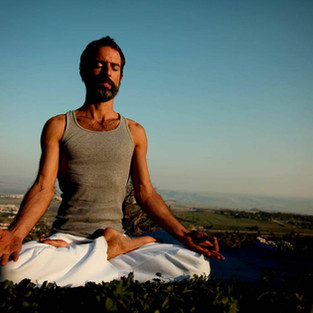Which Meditation is Right for You?
- Natale Teodoro, MACP, LMFT
- Feb 21, 2021
- 3 min read
Updated: Apr 26, 2023
More people become interested in meditation every day, but are unsure how to get started. Many encounter confusion amidst the various types and reasons for meditation. Here is a simple guide to prepare you and help you narrow it down.
1. Beginners Mind: For starters, have realistic expectations. Most experienced meditators refer to a “meditation practice.” That means it is a process, and while the impact may not be noticeable at first, the result is highly subjective and not predictable with any specificity. It gets more refined and more personal the more someone does it. First and foremost — the best way to begin meditation is to start with a mindset of curiosity and patience, no matter how you embark on the path.
2. Why Meditate? Ask yourself what benefits you hope to achieve from the meditation. Merriam-Webster Dictionary online gives these definitions of meditation:
to engage in contemplation or reflection: He meditated long and hard before announcing his decision.
to engage in mental exercise (such as concentration on one's breathing or repetition of a mantra) for the purpose of reaching a heightened level of spiritual awareness
to focus one's thoughts on; reflect on or ponder over. He was meditating his past achievements.
to plan or project in the mind: He was meditating revenge.
As you can see, “meditation” can mean a lot of different things from contemplation, and spiritual development, to intentional focus on just about anything. Are you looking for a way to relieve physical pain or discomfort, or are you pursuing a spiritual practice? Many people end up using different types as their practice develops. Some people don’t have a goal and that is just as great. If that sounds like you, then just know your options and pick what feels right.
3. Focused Attention vs. Mindful Awareness: Most if not all types of meditation fall into one of these two categories. Both categories can lead to altered states of consciousness, and have countless benefits to mind, body, spirit, and even relationships.
Focused attention uses concentration on one specific thing. This can be a mental image; visualization process; sound (like bells, chant, or mantra); a body part, or an item (such as a candle, statue, flower, etc.). Focused attention can be a preferable place to start if concentration tends to be a challenge, or if you are struggling with particular symptoms of mental illness like depersonalization, disassociation, or hallucinations. This is very good for contemplation, developing concepts, relaxation, pain management, and self-soothing.
Mindful awareness meditation is focused on the fluid nature of the breath. This includes the sensations, movements, airflow, and sounds associated with the breathing process. While doing this, the internal state (thought, emotion, sensation) is watched but not followed. This is very good for increasing one’s present awareness (mindfulness) of thoughts, emotions, and sensations in everyday life. It is also very helpful with developing self-control and impulse control. When used in a spiritual practice, and with guidance, it can lead to spiritual development.
4. Choose a Style: Based on your goal for meditation, decide what style of mediation you want to pursue. Here are a few common styles with basic descriptions. Remember, these are very broad descriptions. You should do more specific research, read books, or explore with a teacher once you have an idea about the general direction you want to go.

5. Get Guidance: You can start with basic mobile apps like Calm, Headspace, or Insight Timer (my favorite). There are limitless books available as well. Nothing beats live instruction from another practitioner or teacher. Your therapist may also be able to help you get started. If you are interested in a few guided practices that I have posted on Insight Timer, find them here.
6. Remember step one, and trust the process! :-)















Comments